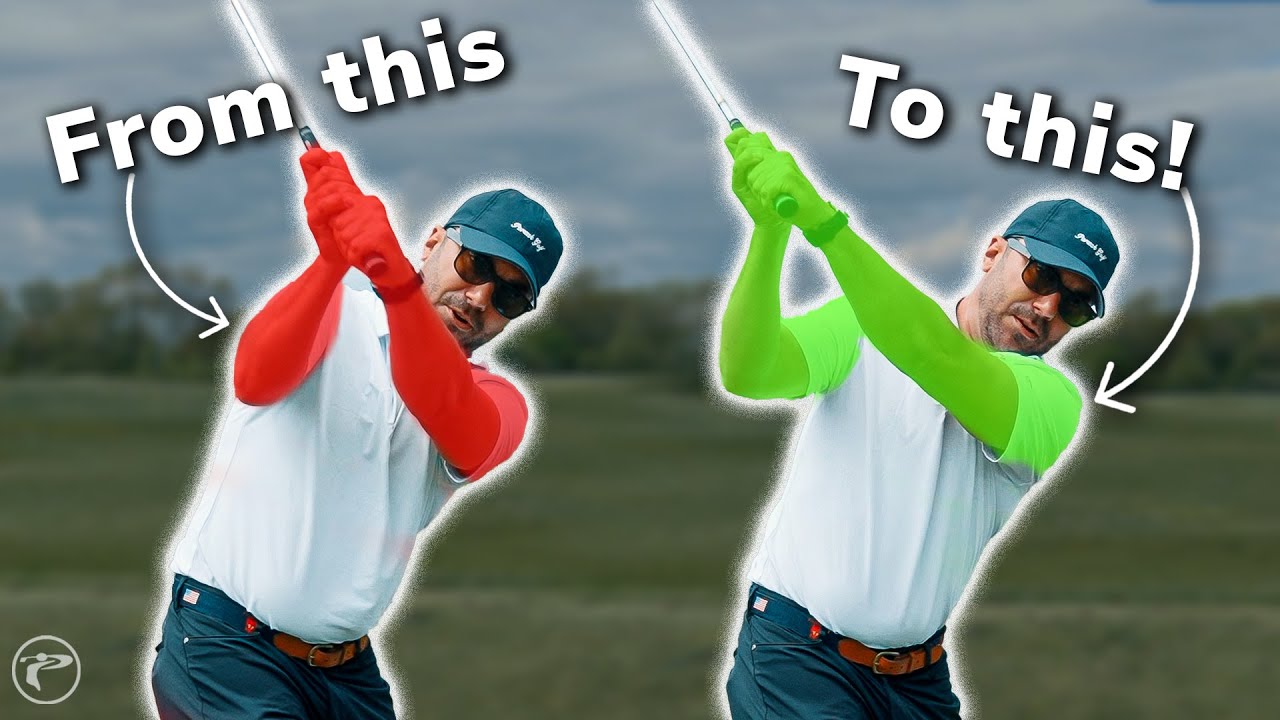
Unleash Your Best Golf Swing
Improving your golf swing often feels like solving a complex puzzle. Many golfers zero in on adjusting their hands or arms, thinking that will perfect the swing plane. What if the real key is making a bigger backswing? At Porzak Golf, we’ve discovered that by enhancing your backswing size with proper turn and width, you can revolutionize your swing mechanics. This not only helps you stay on the plane but also leads to consistent ball strikes.
In this comprehensive guide, I’ll walk you through why a bigger backswing matters, how to achieve it through correct shoulder and hip movements, and effective drills to master this technique. Whether you’re a newcomer or a seasoned player, these insights will help you build a more powerful, rhythmic, and controlled golf swing.
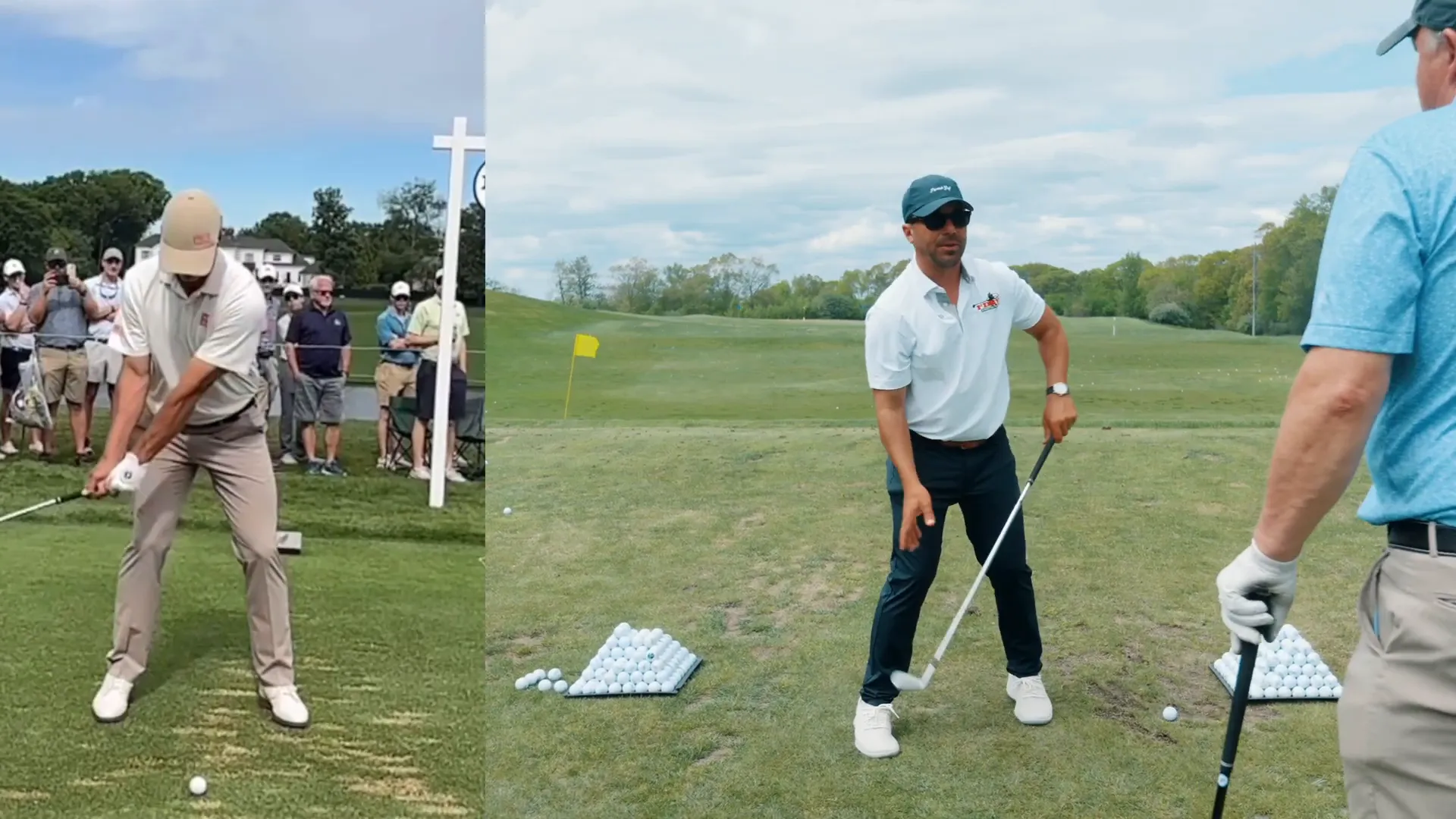
Contents at a Glance
- Understanding the Importance of a Bigger Backswing
- Achieving a Bigger Backswing: Techniques & Tips
- Drills to Master Your Bigger Backswing
- Rhythm and Tempo: Your Backswing’s Hidden Powerhouses
- Avoid These Common Backswing Mistakes
- Your Bigger Backswing Game Plan
- The Science Behind the Swing
- Elevate Your Swing with Porzak Golf
- Final Thoughts
Understanding the Importance of a Bigger Backswing
A common myth in golf swing mechanics is that a shorter backswing guarantees control and consistency. While this might seem safe, too short of a backswing limits your ability to generate power and maintain the correct swing plane.
The backswing is the foundation of everything in your swing. Lack of harmony between your hand and body movements leads to a steep, disconnected downswing. This results in erratic ball striking and inconsistency.
The takeaway is clear: increasing backswing size with proper shoulder rotation and arm width lets your hands take a deeper path. This results in a shallower downswing, improving ball contact and directional control.
Why Many Golfers Struggle with Swing Plane
Frequently, golfers are advised to “get their hands into their right pocket” to shallow the downswing. This advice often precedes correct preparations. Before effectively shallowing the swing, one needs the correct setup and body movement to support a natural hand path.
Observations from our coaching sessions reveal many players whose arms become too vertical at the top. This steepens the downswing, pushing the club incorrectly onto the ball and causing inconsistent shots. Proper body positioning allows for smoother transitions and improved ball striking.
Achieving a Bigger Backswing: Techniques & Tips
Expanding your backswing isn’t just about swinging harder but understanding body mechanics to create more space and turn. Here’s how:
1. Get Your Shoulder Past the Ball
Stand with your golf club in front of a mirror, ensuring your lead shoulder moves past the ball at the top of your backswing. This movement deepens your hand path and increases your turn.
Initially, it may feel like a stretch, but this allows your arms to position better for an optimal downswing.
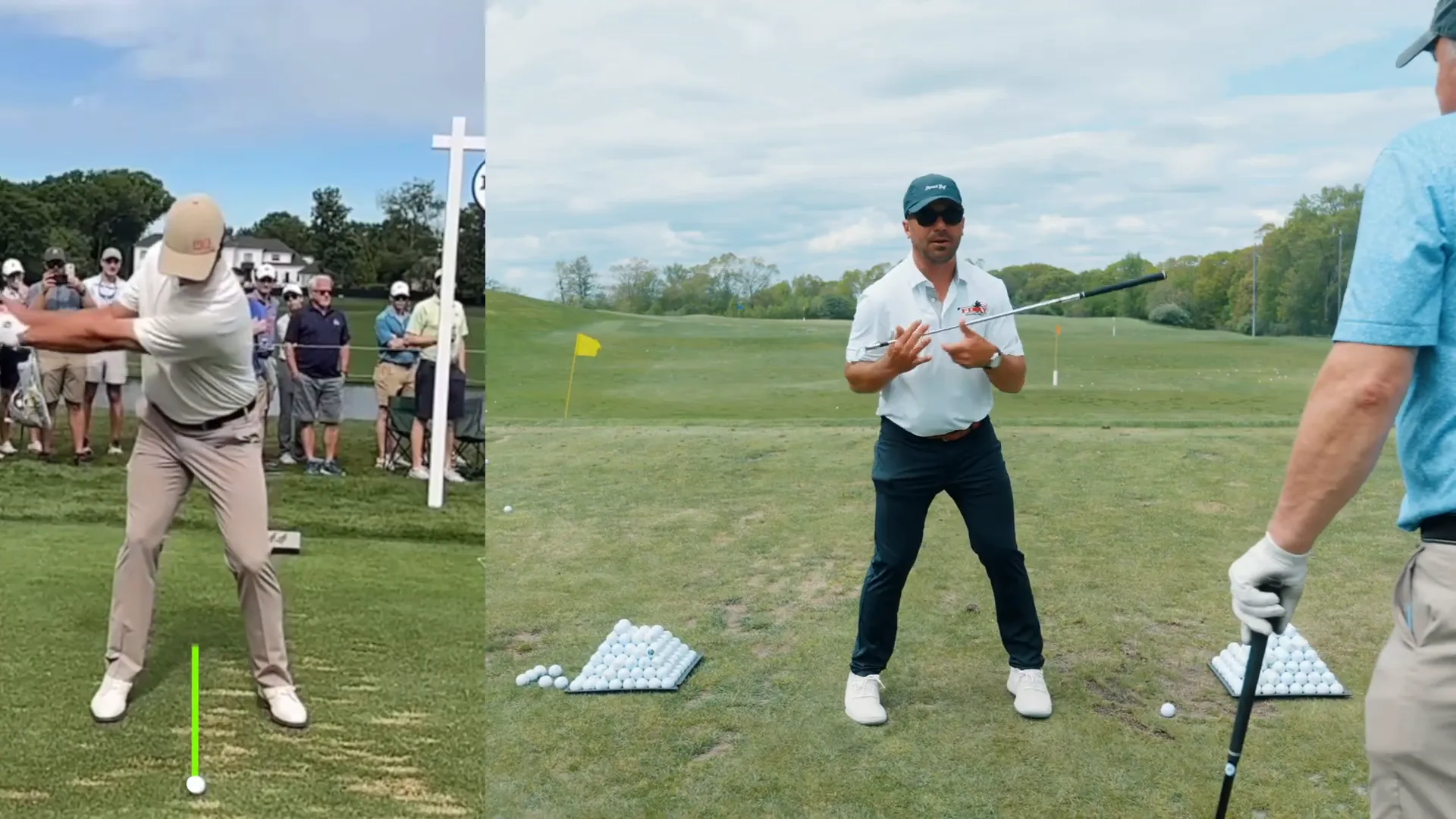
2. Utilize Your Right Pocket and Left Shoulder Connection
The interaction between hips and shoulders during a backswing is vital. As the right hip pocket retreats, the left shoulder moves forward, enhancing body turn.
Notably, both shoulder and hip movements play tandem roles. When executed correctly, they allow the upper body to complete a fuller turn, assisting in swing transition.
3. Incorporate a Tiny Hip Bump
A subtle hip shift towards the target during your backswing creates more space for full shoulder and arm movement without losing balance.
Maintaining a good setup with a slight hip bump and shoulder turn is essential for an effective and larger backswing.
Drills to Master Your Bigger Backswing
Correct movements are crucial for ingraining a larger backswing in muscle memory. Here are trusted drills:
1. Mirror Drill for Shoulder Rotation and Hand Path
In front of a mirror, practice your backswing, ensuring your lead shoulder surpasses the ball and your right pocket retreats. The mirror creates immediate visual feedback on arm position and hand path.
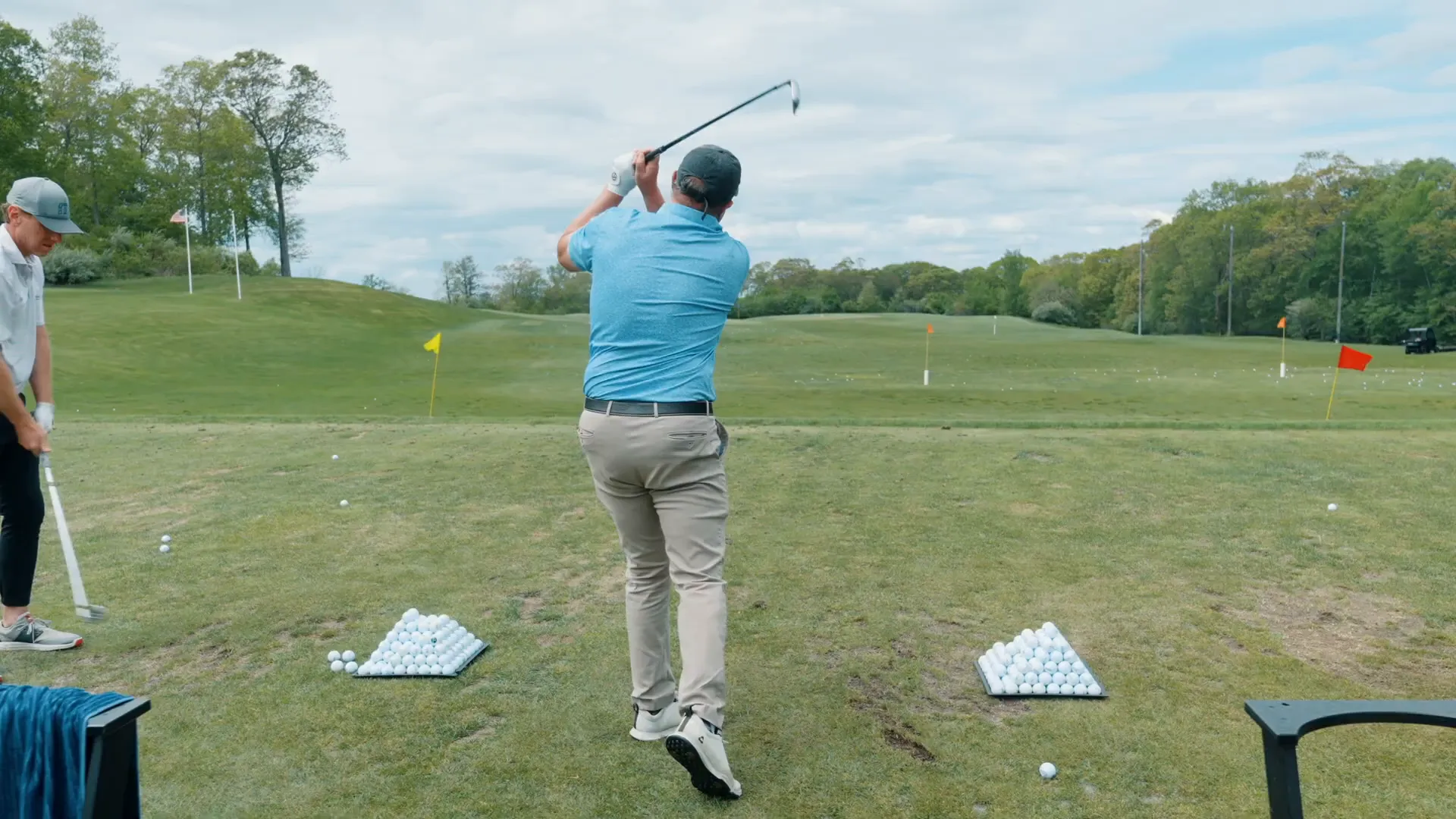
2. The Pause Drill at the Top of the Backswing
A swift transition from backswing to downswing can disrupt timing and connection. Pausing briefly at the top allows synchronization, promoting optimal rhythm and timing.
3. Hinge and Set Drill for Arm Positioning
Hinge wrists and position the club correctly at the top, then initiate a full body turn starting from that ‘set’ position. This drill emphasizes connection, encouraging a natural, repeatable swing motion.
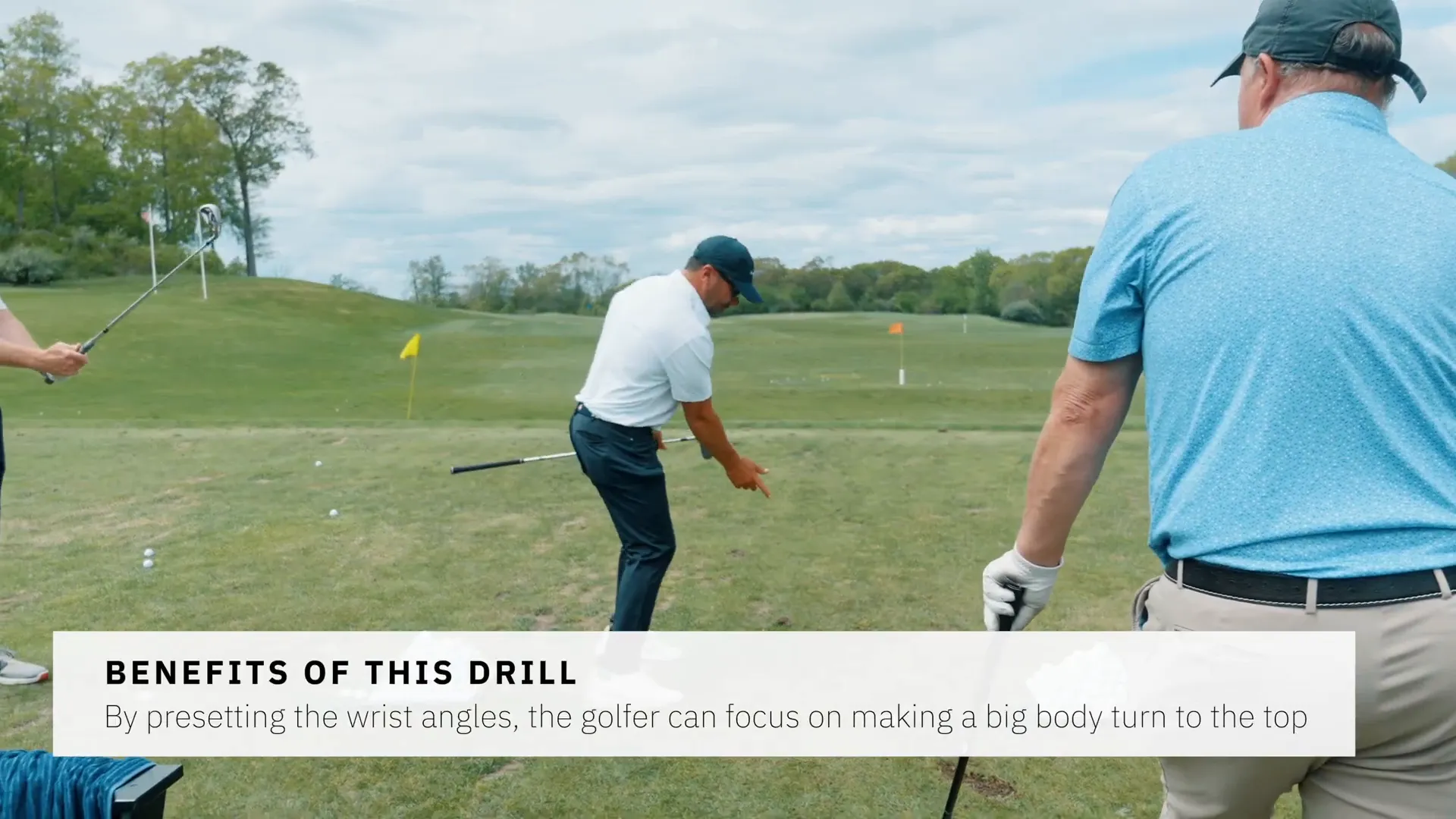
Rhythm and Tempo: Your Backswing’s Hidden Powerhouses
Effective backswing rhythm hinges on synchronized hands and body movement. Too rapid hand movement can disrupt the swing plane.
Efficient, powerful swings result from synchronized, not rushed, movements. A slow, deliberate backswing, especially on crucial shots, guarantees better outcomes.
How to Develop Better Rhythm
- Engage in slow swings with an emphasis on rotation and path.
- Utilize pause drills for timing recalibration.
- Emphasize hip and shoulder coordination.
- Avoid rushing; let turns dictate the swing’s pace.
Avoid These Common Backswing Mistakes
While adopting a larger backswing, avoid common pitfalls:
- Arms Becoming Too Vertical: Results in a steep downswing.
- Body Leading the Arms Too Much: Disrupts synchronization.
- Premature Downswing Initiation: Breaks timing.
- Ignoring Rhythm and Tempo: Causes erratic swings.
Recognizing these errors helps refine focus and accelerates improvement.
Your Bigger Backswing Game Plan
For a comprehensive approach:
- Begin with a balanced setup and a slight hip bump.
- Prioritize shoulder movement and hip placements.
- Hinge wrists and align the club; complete the body turn.
- Pause briefly to harmonize hand, shoulder, and hip movements.
- Initiate the downswing with fluidity and connection.
- Maintain tempo, coordinating hand and body movements.
- Regular cue drills reinforce optimized movements.
Committed practice and attention to fundamentals foster enhanced paths, straighter shots, and elevated gameplay.
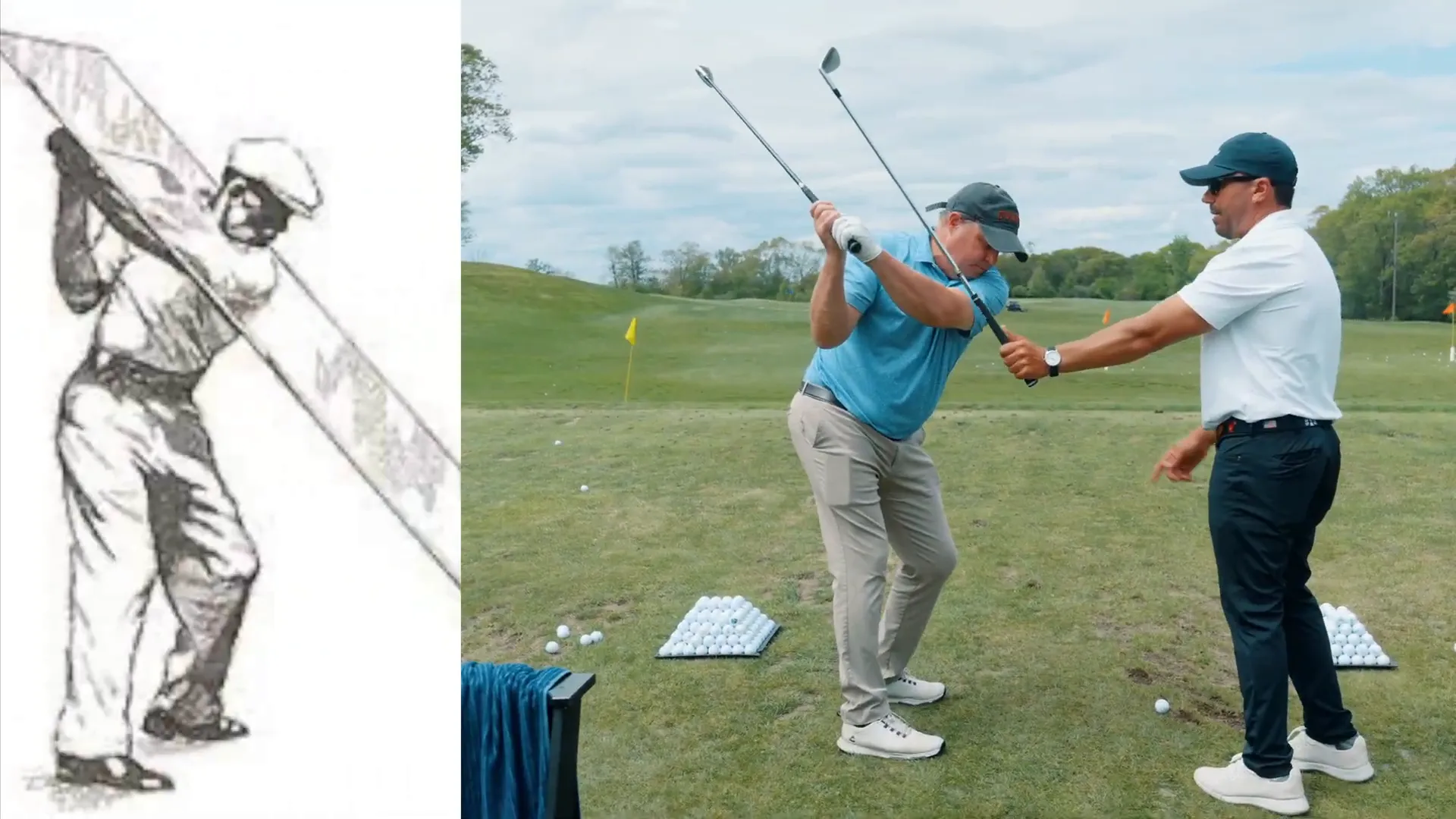
The Science Behind the Swing
This approach is rooted in biomechanics and swing physics. A full turn and deeper arm path lead to a broader swing arc and more stored energy.
- Increased Power: Enhanced backswing yields greater clubhead speed.
- Improved Clubface Control: Staying on the swing plane reduces contact inconsistencies.
- Greater Consistency: Repetitive positioning influences predictable ball flight.
- Lower Injury Risk: Proper mechanics diminish joint strain.
Simplicity and connection are key components in our teachings at Porzak Golf, demystifying these principles in understandable steps.
Elevate Your Swing with Porzak Golf
Join our Full Swing Master Class for a transformation. Our clear, step-by-step guidance emphasizes connection, rhythm, and body movement to perfect golfing mechanics.
Our methodology minimizes complicated techniques, focusing instead on practical adjustments yielding substantial results.
Ready to improve? Visit our Full Swing Master Class. For direct assistance, message us at Info@porzakgolf.com. We’re dedicated to helping golfers develop powerful swings across the globe.
Final Thoughts
Expanding your backswing transforms your golf game. It’s not merely about swing length but achieving body turn and arm positioning, essential for effective hand paths and balanced downswings.
Patience and rhythm hold the key. A gradual backswing, top pause, and on-plane, connected downswing enhance performance. The drills and tips discussed foster muscle memory, building confidence.
Your peak golf swing is attainable. Stretch your backswing for intelligence and connectivity, observing game metamorphosis.

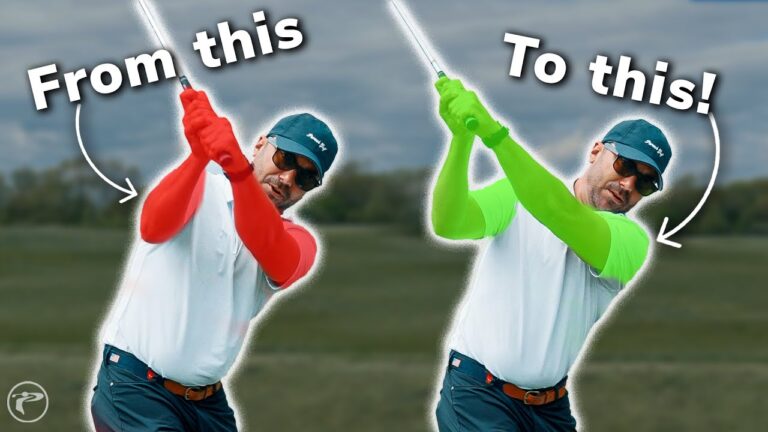
0 Comments